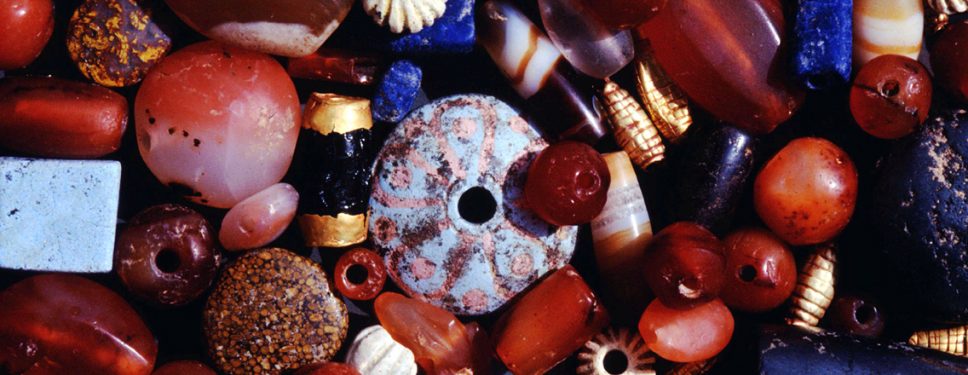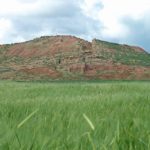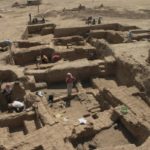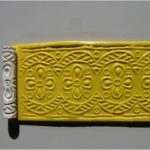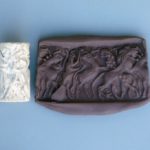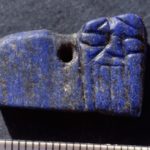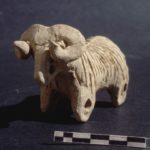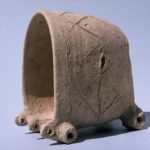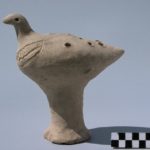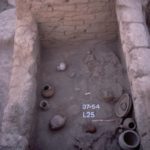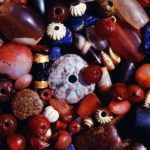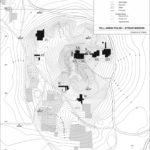Tell Arbid
Tell Arbit
-
Nazwa projektu:
Polish–Syrian Archaeological Mission to Tell Arbid
Strona projektu:
Logo projektu:
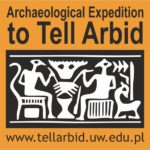
-
Typ stanowiska:
Stanowisko osadnicze, cmentarzyska
Lokalizacja:
Syria
Północna Syria
Syryjska Jazira
Dorzecze górnego Chaburu (tzw. Trójkąt Chaburski)
Górna MezopotamiaDatowanie:
– okres kultury Niniwa 5 (2750–2550 p.n.e.)
– okres wczesnodynastyczny III (2550–2300 p.n.e.)
– okres akadyjski (2300–2150 p.n.e.)
– okres postakadyjski (2150–1950 p.n.e.)
– okres kultury chaburskiej (1950–1500 p.n.e.)
– okres Mitanni (1500–1300 p.n.e.)
– okres nowobabiloński (ok. VI wieku p.n.e.)
– okres hellenistyczny (do II wieku p.n.e.)
Najciekawsze odkrycia:
– Świątynia z okresu kultury Niniwa 5, jedna z najstarszych budowli tego typu w północnej Mezopotamii
– Dwa bogato wyposażone groby kobiece z okresu mitanijskiego
– Pozostałości zabudowy mieszkalnej i oficjalnej z różnych okresów
– Groby z okresu chaburskiego
– Liczne przykłady gliptyki oraz drobnej plastyki głownie terakotowej z różnych okresów, m.in.: figurki zoomorficzne i antropomorficzne, modele wozów, zabawki, grzechotki
Historia badań:
Badane przez misję CAŚ UW w latach:
1996–2010; od 2011 badania zawieszone
Kierownik badań:
Piotr Bieliński (1996–2021)
Anna Smogorzewska (od 2021)
Instytucje współpracujące:
– Centrum Archeologii Śródziemnomorskiej Uniwersytetu Warszawskiego
– Dyrekcja Starożytności i Muzeów Syrii
Informacje dodatkowe:
Pierwsze badania sondażowe na Tell Arbid przeprowadził w 1936 roku brytyjski archeolog sir Max Mallowan, mąż Agathy Christie. W sezonie 2000 ekspedycja austriacko-amerykańska, pod kierunkiem Prof. Gebharda Seltza z Oriental Institute of Vienna University oraz Davida Nelsona Gimbela z Archeos Inc. dołączyła do misji CAŚ UW. Przeprowadziła badania na północnym stoku głównego tellu.
W 2004 rozpoczęto współpracę z misją czeską z Uniwersytetu Masaryka w Brnie, kierowaną przez dr Innę Mateiciucovą. Przeprowadziła ona badania powierzchniowe w okolicy Tell Arbid oraz wykopaliska na niewielkim stanowisku Tell Arbid Abyad z okresu Halaf.
W 2008 roku dr Rafał Koliński (UAM), wieloletni członek misji CAŚ UW, rozpoczął trzyletni projekt badawczy „Upadek, regres czy rozwój. Sytuacja osadnicza i kulturowa w syryjskiej Dżezirze u schyłku wczesnego okresu epoki brązu”. W jego ramach badał warstwy Post-Akadyjskie w Sektorze P (poprzednio SR).
Opis stanowiska i badań:
Stanowisko mierzy ok. 38 ha i składa się z właściwego tellu, czyli tzw. górnego miasta (14 ha, wys. ok. 14 m ponad równinę) i otaczającego go dolnego miasta. Tell Arbid jest stanowiskiem wielokulturowym o bardzo długim czasie zasiedlenia przypadającym na epokę brązu. W starożytności otaczający go żyzny step był gęsto zasiedloną i zasobną krainą. Tell Arbid, którego nazwy starożytnej nie znamy, był średniej wielkości miastem położonym pomiędzy największymi ośrodkami tego regionu w 3 tysiącleciu p.n.e.: Tell Brak (starożytne Nagar) i Tell Mozan (starożytne Urkisz).
Dobrze zachowane dzielnice z okresu kultury Niniwa 5 pozwalają prześledzić charakter zwartej zabudowy miasta, siatkę krętych ulic, wygląd poszczególnych domostw z instalacjami i zabudowaniami gospodarczymi. Do największych odkryć należy świątynia z tego okresu, jedna z nielicznych tego typu budowli w północnej Mezopotamii. Był to prostokątny budynek z cegły mułowej (7 m x 10 m), którego mury dochodziły do 1,5 m grubości. Wewnątrz stał ceglany ołtarz metrowej wysokości, pokryty białym tynkiem. Tuż przed nim znajdowało się kwadratowe palenisko, obok zaś leżała gliniana kadzielnica w formie długiej kolumienki z wgłębieniem u góry. Przed wejściem do świątyni znajdowała się wysoka na min. 3,5 metra sztuczna skarpa, rodzaj gliniano-ceglanej schodkowej terasy, która dodawała fasadzie monumentalności.
Na szczycie cytadeli odsłonięto fragment dużej budowli z okresu wczesnodynastycznego, o charakterze oficjalnym, o czym świadczy fasada budynku ozdobiona ryzalitami – dekoracją zarezerwowaną wyłącznie dla najważniejszych, reprezentacyjnych budowli mezopotamskich.
Na przełomie 3 i 2 tysiąclecia p.n.e. miasto przestaje być gęsto zasiedlone. Dzielnice mieszkalne z okresu postakadyjskiego (koniec 3 tys. p.n.e.) i tzw. okresu chaburskiego (1 poł. 2 tys. p.n.e.) są luźno zabudowane, a przestrzenie pomiędzy zabudowaniami wykorzystywane są jako cmentarzyska.
W czasach królestwa Mitanni (połowa 2 tys. p.n.e.) główny tell zostaje opuszczony, a osadnictwo przenosi się na teren u jego podnóża (sektor A), gdzie odsłonięto fragmenty bogatej farmy. O jej zamożności świadczą odkryte na cytadeli bogato wyposażone groby kobiece.
Najmłodsze pozostałości – z okresu nowobabilońskiego i hellenistycznego – są nieliczne, wskazując na mało intensywny charakter zasiedlenia.
Rezultaty badań:
Sezon po sezonie – „Newsletter PCMA”:
- Sezon 2010
- Sezon 2010, misja UAM
- Sezon 2009
- Sezon 2009, misja UAM
- Sezon 2008
- Sezon 2008, misja UAM
- Sezon 2007
- Sezon 2006
Biuletyn „Archeowieści PCMA”, 23, (2010): Świątynne wzgórze i gliniane zabawki – najnowsze odkrycia w syryjskim Tell Arbid
Biuletyn „Archeowieści PCMA”, 19, (2010): Syria – Tell Arbid 2010: Zakończenie projektu poznańskiego zespołu
Biuletyn „Archeowieści PCMA”, 12, (2009): Syria – Tell Arbid: Badania Uniwersytetu Warszawskiego
Biuletyn „Archeowieści PCMA”, 10, (2009): Syria – Tell Arbid (projekt UAM)
Biuletyn „Archeowieści PCMA”, 7, (2008): Miasto w północnej Mezopotamii z III tysiąclecia p.n.e.
Biuletyn „Archeowieści PCMA”, 4, (2008): Syria: Tell Arbid – wykopaliska Uniwersytetu Adama Mickiewicza w Poznaniu
Wydarzenia związane z projektem:
2021-07 Zmiana kierownictwa ekspedycji: Tell Arbid i Tell Qaramel
2020-08 Tell Arbid: publikacja dr Anny Smogorzewskiej
2019-10 Wręczenie Księgi Jubileuszowej Profesorowi Bielińskiemu
2016-04 Wystawa „W cieniu wojny. Zabytki Syrii i Iraku w badaniach Centrum Archeologii Śródziemnomorskiej UW” (Warszawa)
Academia.edu: Więcej linków do artykułów można znaleźć na stronie projektu w serwisie Academia.edu
Maaranen, N., Walker J., Sołtysiak A. (2024). Early Bronze Age population substructure in the Khabur basin: preliminary evidence from Tell Brak, Tell Arbid and Tell Barri (Syria), Anthropologica et Praehistorica. Brussels, 132:63-80.
Smogorzewska, A. (2020). Houses with a Central Courtyard. House Concepts in the Late Ninevite 5 Period at Tell Arbid, Zeitschrift für Assyriologie und Vorderasiatische Archäologie, 110(1), 119–124. DOI: https://doi.org/10.1515/za-2020-0010
Momot, M. (2019). Hellenistic tableware with stamped decoration from Tell Arbid (Syria), in: Pieńkowska, A., Szeląg, D., Zych, I. (eds), Stories told around the fountain. Papers offered to Piotr Bieliński on the occasion of his 70th birthday, Warsaw: PCMA, WUW, 495–504. https://doi.org/10.31338/uw.9788323541714
Piątkowska-Małecka, J., Smogorzewska, A. (2019). “Pigeon broth” and other meat dishes prepared by the people of Tell Arbid in the 3rd millennium BC, in: Pieńkowska, A., Szeląg, D., Zych, I. (eds), Stories told around the fountain. Papers offered to Piotr Bieliński on the occasion of his 70th birthday, Warsaw: PCMA, WUW, 521–538. https://doi.org/10.31338/uw.9788323541714
Rutkowski, Ł. (2019). Late 3rd millennium BC painted pottery from Tell Arbid, in: Pieńkowska, A., Szeląg, D., Zych, I. (eds), Stories told around the fountain. Papers offered to Piotr Bieliński on the occasion of his 70th birthday, Warsaw: PCMA, WUW, 621–640. https://doi.org/10.31338/uw.9788323541714
Sołtysiak, A. (2019). Women from Tell Arbid, in: Pieńkowska, A., Szeląg, D., Zych, I. (eds), Stories told around the fountain. Papers offered to Piotr Bieliński on the occasion of his 70th birthday, Warsaw: PCMA, WUW, 640–658. https://doi.org/10.31338/uw.9788323541714
Szeląg, D., Wygnańska, Z. (2019). Infant burials in the Ninevite 5 mortuary landscape, in: Pieńkowska, A., Szeląg, D., Zych, I. (eds), Stories told around the fountain. Papers offered to Piotr Bieliński on the occasion of his 70th birthday, Warsaw: PCMA, WUW, 689–714. https://doi.org/10.31338/uw.9788323541714
Wygnańska, Z. (2019). A break in cultural legacy: child grave inventories from Tell Arbid, Syria, in transition from EBA to MBA, Levant, DOI: 10.1080/00758914.2019.1661141
Smogorzewska, A. (2017). Tell Arbid. House and Household in a Changing Town (=PAM Monograph Series 9), Warsaw. https://doi.org/10.31338/uw.9788323540984
Bieliński, P. (2016). Tell Arbid (Hassake), in: Y. Kanjou, A. Tsuneki (eds), A History of Syria in One Hundred Sites, Archaeopress Archaeology.
Bieliński, P. (2016). A Sealing from Tell Arbid: Once More About Seal Impressions on Ceramic Vessels, in: B. Perello, A. Tenu (eds), Parcours d’Orient. Recueil de textes offert a Christine Kempinski, 9–12.
Makowski, M. (2016). Tell Arbid I: Clay Figurines, Warsaw: IKŚiO PAN.
Smogorzewska, A. (2016). The Final Stage of Ninevite 5 Pottery: Morphological Types, Technology and Diachronic Analysis from Tell Arbid (North-East Syria), Iraq 78, 175–214. Doi:10.1017/irq.2016.1
Bieliński, P. (2016). Tell Arbid (Hassake), in: Y. Kanjou, A. Tsuneki (eds), A History of Syria in One Hundred Sites, Archaeopress Archaeology.
Bieliński, P. (2016). A Sealing from Tell Arbid: Once More About Seal Impressions on Ceramic Vessels, in: B. Perello, A. Tenu (eds), Parcours d’Orient. Recueil de textes offert a Christine Kempinski, 9–12.
Makowski, M. (2016). Tell Arbid I: Clay Figurines, Warsaw: IKŚiO PAN.
Smogorzewska, A. (2016). The Final Stage of Ninevite 5 Pottery: Morphological Types, Technology and Diachronic Analysis from Tell Arbid (North-East Syria), Iraq 78, 175–214. Doi:10.1017/irq.2016.1
Makowski, M. (2015). Zoomorphic Clay Figurines from Tell Arbid. Preliminary Report, Polish Archaeology in the Mediterranean 24/1, 627–656.
Makowski, M. (2015). Of Men and Equids: Piecing the Clay Images from Tell Arbid Back Together, Études et Travaux 28, 121–140.
Mueller-Bieniek, A., Wasylikowa, K., Smogorzewska, A. (2015). Plant Macrofossils from the Site of Tell Arbid (3rd–2nd Millennium BC ), Northeast Syria. Preliminary Report, Polish Archaeology in the Mediterranean 24/1, 657–674.
Makowski, M. (2014). Terracotta Equid Figurines from Tell Arbid. New Evidence on Equids, their Equipment and Exploitation in North Mesopotamia During Third and First Half of Second Millennium BC, Études et Travaux 27, 257–278.
Pieńkowska, A. (2014). The Fire and Light. Mesopotamian Lamps from Polish Archaeological Excavations on Tell Arbid, in: P. Bieliński et alii (eds), Proceedings of the 8th ICAANE, 30 April–4 May 2012, University of Warsaw, vol. 3, Wiesbaden, Harrassowitz Verlag, 3–16.
Reiche, A. (2014). Tell Abu Hafur ‚East’, Tell Arbid (North-Eastern Syria) and Nemrik (Northern Iraq) as Examples of Small-Scale Rural Settlements in Upper Mesopotamia in the Mittani Period, in: D. Bonatz (ed.), The Archaeology of Spaces. The Upper Mesopotamian Piedmont in the Second Millennium BCE, (=Topoi Berlin Studies of the Ancient World 12), Berlin-Boston, De Gruyter, 43–59.
Smogorzewska, A. (2014). Ninevite 5 Kitchenware Morphology and Technological Characteristic, Polish Archaeology in the Mediterranean 23/1, 471–503.
Smogorzewska, A. (2014). Cooking, Heating and Processing. The Function of Fire Installations in Household Activities at Tell Arbid (NE Syria), in: P. Bieliński et alii (eds), Proceedings of the 8th ICAANE, 30 April–4 May 2012, University of Warsaw, 3, Wiesbaden, Harrassowitz Verlag, 17–30.
Szymczak, A. (2014). Khabur Ware Period Objects of Unbaked Clay from Tell Arbid: a Short Note on the Second Set of Finds, in: P. Bieliński et alii (eds), Proceedings of the 8th ICAANE, 30 April–4 May 2012, University of Warsaw 2, Wiesbaden, Harrassowitz Verlag, 757–764.
Wygnańska, Z. (2014). The Ancestor Cult in the Middle Bronze Age at Tell Arbid, Syria, in: P. Pfälzner, H. Niehr, E. Pernicka, S. Lange, T. Köster (eds), Contextualising Grave Inventories in the Ancient Near East. Proceedings of a Workshop at the London 7th ICAANE in April 2010 and an International Symposium in Tübingen in November 2010, both Organised by the Tübingen Post-Graduate School “Symbols of the Dead“ (=Qatna Studien Supplementa 3), Wiesbaden: Harrassowitz Verlag, 39–49.
Baka, C., Hamburg., J. (2013). Decorative Motifs on Early Excised/Incised Ninevite 5 Pottery from Tell Arbid, Polish Archaeology in the Mediterranean 22, 421–437.
Bielińska, D. (2013). „Suckling Antelopes” from Tell Arbid – a Rare Iconographic Motif from the 3rd Millennium BC, Études et Travaux 26/1, 121–126.
Bieliński, P. (2013). Preliminary Results of the Fifteenth Field Season of Joint Polish–Syrian Explorations on Tell Arbid, Polish Archaeology in the Mediterranean 22, 351–370.
Koliński, R. (2013). Tell Arbid. Adam Mickiewicz University Excavations in Sector P – Spring Season of 2010, Polish Archaeology in the Mediterranean 22, 451–478.
Makowski, M. (2013). Anthropomorphic Figurines of the Second Millennium BC from Tell Arbid. Preliminary Report, Polish Archaeology in the Mediterranean 22, 617–626.
Piątkowska-Małecka, J., Smogorzewska, A. (2013). Animal Bone Remains from Tell Arbid (Season 2009) — Archaeozoological Analysis, Polish Archaeology in the Mediterranean 22, 438–449.
Reiche, A. (2013). Polskie wykopaliska w Tell Arbid (Syria) w latach 1996–2012 // Polish Excavations in Tell Arbid (Syria) in 1996–2012, in: Dolińska, M., Górecki, T., Reiche, A., Twardecki, A., Zbiory Sztuki Starożytnej i Wschodniochrześcijańskiej a wykopaliska archeologiczne Muzeum Narodowego w Warszawie // The Collection of Ancient Christian Art and Archaeological Excavations of the National Museum in Warsaw, Rocznik Muzeum Narodowego w Warszawie. Nowa Seria // Journal of the National Museum in Warsaw. New Series 2(38), 39–43, 51–54.
Reiche, A., Smogorzewska, A. (2013). Ninevite 5 Kitchen from Tell Arbid (Area W), Polish Archaeology in the Mediterranean 22, 371–386.
Smogorzewska, A. (2013). Fenestrated Pot Stands in Ninevite 5 Pottery Tradition: New Data from Tell Arbid (North-East Syria), Akkadica 132/2, 187–199.
Szymczak, A. (2013). Set of Second Millennium BC Unbaked Clay Objects from Tell Arbid, Polish Archaeology in the Mediterranean 22, 387–420.
Wasylikowa, K., Koliński, R. (2013). The Role of Plants in the Economy of Tell Arbid, North-East Syria, in the Post-Akkadian Period and Middle Bronze Age, Acta Palaeobotanica 53(2).
Smogorzewska, A. (2012). Fire Installations in Household Activities. Archaeological Study from Tell Arbid (North-East Syria), Paléorient 38/1, 229–249.
Bieliński, P. (2012). Tell Arbid 2008-2009. Preliminary Report on the Results of the Thirteenth and Fourteenth Seasons of Polish-Syrian Excavations, Polish Archaeology in the Mediterranean 21, 511–536.
Koliński, R. (2012). Adam Mickiewicz University of Poznań Excavations in Sector P at Tell Arbid (Spring 2009), Polish Archaeology in the Mediterranean 21, 537–557.
Koliński, R. (2012). Generation Count at Tell Arbid, Sector P, in: H. Weiss (ed.) Seven Generations since the Fall of Akkad, (=Studia Chaburensia 3), Wiesbaden, 109–128.
Koliński, R. (2012). Badania Instytutu Prahistorii UAM na Tell Arbid (północno-wschodnia Syria) w latach 2008–2009, Folia Praehistorica Posnaniensia 16m, 215–250.
Piątkowska-Małecka, J., Wygnańska, Z. (2012). Animal Remains from Middle Bronze Age Graves at Tell Arbid (Syria), Światowit 9 (50)/A (2011), 67–80.
Raccidi, M. (2012). Chariot Terracotta Models from Tell Arbid and Tell Barri. A Typological and Functional Analysis, in: Proceedings of the 7th International Congress of the Archaeology of the Ancient Near East 3, 673–682.
Raccidi, M. (2012). Chariot Terracotta Models from Tell Arbid, Polish Archaeology in the Mediterranean 21:, 605–623.
Smogorzewska, A. (2012). Jazirah Burnished Ware from Tell Arbid and its Northern Affiliations, Anatolica 38, 129–147.
Sołtysiak, A., Koliński, R. (2012). Preliminary Report on Human Remains from Tell Arbid, Sector P. Excavation Seasons 2008–2010, Światowit 9 (50)/A (2011), 49–66.
Szeląg, D. (2012). Adult Burials of Ninevite 5 Date on Tell Arbid (2007-2008), Polish Archaeology in the Mediterranean 21, 585–604.
Wygnańska, Z. (2012). Mortuary Practices of Early Second Millennium BC on Tell Arbid (NE Syria). Continuity and Changes, in: N. Laneri, P. Pfaelzner, S. Valentini (eds), Looking North. The Socio-economic Dynamics of the Northern Mesopotamian and Anatolian Regions during the Late Third and Early Second Millennium B.C., Studien zur Urbanisierung Nordmesopotamiens (SUN), Serie D, 1, Wiesbaden, 229–236.
Koliński, R. (2011). Report on the Activities of the Polish-Syrian Mission to Tell Arbid, Governorate of Hasake, Spring Season of 2009, in: A. Abdulrahman (ed.), Chronique Archéologique en Syrie 5-2009, Damascus, 85–96.
Koliński, R. (2011). Tell Arbid. Adam Mickiewicz University of Poznan Excavations in Sector P, Spring Season of 2008, Polish Archaeology in the Mediterranean 20, 303–320.
Szeląg, D. (2011). Two Ovens from the first half of the 3rd Millennium BC at Tell Arbid. Evidence for Grain Processing?, Światowit 49/A (2009–2010), 113–120.
Wygnańska, Z. (2011). Burial Customs at Tell Arbid (Syria) in the Middle Bronze Age. Cultural Interrelations with the Nile Delta and the Levant, Polish Archaeology in the Mediterranean 20, 605–618.
Bieliński, P. (2010). Tell Arbid. Preliminary Report on the Results of the Twelfth Season of Syrian-Polish Excavations, Polish Archaeology in the Mediterranean 19, 537–554.
Koliński, R. (2010). Report on the Activities of the Polish-Syrian Mission to Tell Arbid, Governorate of Hasake, Spring Season of 2008, in: A. Abdulrahman (ed.), Chronique Archéologique en Syrie, 4–2008, Damascus.
Piątkowska-Małecka, J., Smogorzewska, A. (2010). Animal Economy at Tell Arbid, North-East Syria, in the Third Millennium BC, Bioarchaeology of the Near East 4/2010, 25–43.
Smogorzewska, A. (2010). Technological marks on pottery vessels. Study of evidence from Tell Arbid, Tell Rad Shaqrah and Tell Jassa el-Gharbi (Northeastern Syria), Polish Archaeology in the Mediterranean 19, 555–564.
Sołtysiak, A. (2010). Short Fieldwork Reports: Tell Arbid (Syria), Seasons 1996–2010, Bioarchaeology of the Near East 4: 45–48.
Bieliński, P. (2009). Some Cylinder Seal Impressions on Pottery from Tell Arbid, in: O. Drewnowska (ed.), Here and There. Across the Ancient Near East. Studies in Honour of Krystyna Łyczkowska, Warsaw, 1–8.
Bieliński, P. (2009). Tell Arbid w północno-wschodniej Syrii, in: B. Kaim (ed.), Blisko i daleko. Księga jubileuszowa Instytutu Archeologii Uniwersytetu Warszawskiego, Warszawa, 105–114.
Smogorzewska, A. (2009/2010). Andirons from Tell Arbid. Archaeological and Ethnoarchaeological Studies, Etudes et Travaux 23, 137–150.
Bieliński, P. (2008). Tell Arbid. Preliminary Report on the Eleventh Season of Polish-Syrian Explorations, Polish Archaeology in the Mediterranean 18, 549–561.
Daszkiewicz, M. (2008). Composition and Technology of a Glass Vessel from Tell Arbid, Damaszener Mitteilungen 15 (2006), 95–99.
Koliński, R. (2008). Sur les traces de Max E.L. Mallowan, in: M. el-Maqdissi (ed.), Pionniers et protagonistes de l’archéologie syrienne (1860–1960). D’Ernest Renan a Sélim Abdulhak, Damas-DGAM 2008: 292–293.
Koliński, R., Reiche, A. (2008). After the Fall of Assyria, in: D. Bonatz, R. M. Czihon, F. J. Kroeppner (eds), Fundstellen. Gesamelte Schriften zur Archäologie und Geschichte Altvorderasiens ad honorem Hartmut Kühne, Wiesbaden, 51–59.
Ławecka, D. (2008). Heating Places and Ovens of the 3rd Millennium BC In Sector SD on Tell Arbid, Polish Archaeology in the Mediterranean 18, 562–569.
Moskalewska-Lasota, A., Gręzak, A., Tomek, T. (2008). Animal Remains from the Mitanni Grave at Tell Arbid, Damaszener Mitteilungen 15 (2006), 101–104.
Smogorzewska, A. (2008). Mitanni Grave at Tell Arbid, Damaszener Mitteilungen 15 (2006), 67–93.
Smogorzewska, A., Piątkowska-Małecka, J. (2008). Animal Economy at Tell Arbid (Northern Mesopotamia) in 3000–2000 BC, in: D. Makowiecki et al. (eds), Archaeozoological Research in Poland and Middle Europe. Data-Methods-Interpretations. Environment and Culture 5, 83–85.
Smogorzewska, A. (2007). Odkrywanie wielokulturowości – wykopaliska archeologiczne w Tell Arbid, Uniwersytet Warszawski 4 (34), 18–19.
Bieliński, P. (2007). Report on the Syrian-Polish Explorations in 2005. The Tenth Season, Polish Archaeology in the Mediterranean 17, 451–471.
Koliński, R. (2007). Sir Max Mallowan’s Excavations at Tell Arbid, 1936, Iraq 69, 73–115.
Makowski, M. (2007). Anthropomorphic Figurines of the Third Millennium BC from Tell Arbid. Preliminary report, Polish Archaeology in the Mediterranean 17, 472–482.
Wygnańska, Z. (2007). Kult przodków na Tell Arbid w okresie środkowego brązu, in: W. Dzieduszycki, J. Wrzesiński (eds), Środowisko pośmiertne człowieka. Funeralia Lednickie — spotkanie 9, Poznań, 227–235.
Ławecka, D. (2006). Late Ninevite 5 Structures in the Eastern District at Tell Arbid, N-E Syria, Orient Express 3, 71–3.
Piątkowska-Małecka, J., Wygnańska, Z. (2006). Szczątki zwierzęce z grobowca chaburskiego na stanowisku Tell Arbid (Syria) jako przejaw wierzeń i rytuałów pogrzebowych, in: Zwierzę jako sacrum w pradziejach i starożytności. Materiały z sympozjum naukowego w Busku Zdroju, 1, Kielce, 77–99.
Reiche, A. (2006). Polish Archaeological Research in North-Eastern Syria, Bulletin du Musée National de Varsovie 42 (2001), 95–106.
Piątkowska-Małecka, J., Koliński, R. (2006). Animal Remains from the Polish Excavations at Tell Arbid, North-East Syria, in: N. Benecke (ed.), Beiträge zur Archäozoologie und prähistorische Anthropologie 5, Ludwigsdorf, 22–31.
Sołtysiak, A. (2006). Short Fieldwork Reports: Tell Arbid (Syria), Seasons 1996–2002, Studies in Historical Anthropology 3 (2003), 135–136.
Sołtysiak, A. (2006). Studies on Human Remains in Syria and Iraq, Seasons 2001–2002. A General Overview, Studies in Historical Anthropology 3 (2003), 131–134.
Bieliński, P. (2005). The Ninth Season of Syrian-Polish Excavations. Preliminary Report, Polish Archaeology in the Mediterranean 16, 475–489.
Herbich, T. (2005). Geophysical Survey, 2004, Polish Archaeology in the Mediterranean 16, 490–496.
Ławecka, D. (2005). Tell Arbid. Polskie badania w północno-wschodniej Syrii, Archeologia Żywa 31/1, 5–11.
Bieliński, P. (2004). The 2003 Campaign of Polish-Syrian Excavations. Preliminary Report, Polish Archaeology in the Mediterranean 15, 335–354.
Smogorzewska, A. (2004). Late Ninevite 5 Quarter at Tell Arbid, Orient Express 2004/3, 69–71.
Bieliński, P. (2003). The Seventh Season of Excavations. Preliminary Report, Polish Archaeology in the Mediterranean 14, 301–314.
Bieliński, P. (2002). The Sixth Campaign of Excavations. Preliminary Report, Polish Archaeology in the Mediterranean 13, 279–294.
Koliński, R. (2002). Bulls from Tell Arbid, in: P. Taracha (ed.), Silva Anatolica. Papers presented to Maciej Popko on the Occasion of his 65th Birthday, Warsaw, 211–224.
Bielińska, D. (2001). A Third Millennium B.C. Cylinder Seal from Tell Arbid, Études et Travaux 19, 42–44.
Bieliński, P. (2001). Tell Arbid, Interim Report of the Fifth Season, Polish Archaeology in the Mediterranean 12, 315–325.
Bieliński, P. (2000). An Early Iron Age Stamp Seal from Tell Arbid, in: Les civilisations du Bassin Méditerranéen. Hommages a Joachim Śliwa, Kraków, 327–330.
Bieliński, P. (2000). Tell Arbid, The Fourth Season, Polish Archaeology in the Mediterranean 11, 273–284.
Bieliński, P. (1999). Tell Arbid, Preliminary Report, 1998, Polish Archaeology in the Mediterranean 10, 206–216.
Smogorzewska, A., Daszkiewicz, M. (1999). Brief Report on Chemical Analysis of Metallic Ware from Tell Arbid with Special Reference to “Storage” Metallic Ware, Orient Express, 1999/1, 25–27.
Bieliński, P. (1998). Second Campaign of Syro-Polish Excavations, Polish Archaeology in the Mediterranean 9, 212–223.
Bieliński, P. (1997). Preliminary Report on the First Season of Syro-Polish Excavations on Tell Arbid, Polish Archaeology in the Mediterranean 8, 203–211.
Bibliografia stanowiska
Lyonnet, B. (ed.), (2000). Prospection Archéologique Haut-Khabur Occidental (Syrie du N.E.), vol. 1, Beyrouth.
Mallowan, M.E.L. (1937). The Excavations at Tell Chagar Bazar and an Archaeological Survey of the Habur Region. 2nd Campaign, 1936, Iraq 4, 91–177.
Galeria:
-
1. View of the site from the east, spring season, 2006 / Widok stanowiska od strony wschodniej, sezon wiosenny 2006 (Fot. A. Reiche)
-
2. Main room of the temple from the first half of the 3rd millennium BC after clearing in 2007, view from the south. / Główne pomieszczenie świątyni z 1 poł. III tys. p.n.e. po eksploracji w sezonie 2007; widok od południa (Fot. A. Reiche)
-
3. Work in sector W in 2007, view from the north / Praca w sektorze w w 2007 roku, widok od północy (Fot. Ł. Wojnarowicz)
-
4. Cylinder seal from the Ninevite 5 period with geometrical decoration in the so-called Piedmont Style and its modern-day impression (first half of the 3rd millennium BC) / Pieczęć cylindryczna z okresu Niniwa 5 oraz jej współczesny odcisk; dekoracja geometryczna w tzw. styl podgórskim (1. poł. 3 tys. p.n.e) (Fot. A. Reiche)
-
5. Cylinder seal from the Early Dynastic period with the depiction of the „Lord of the animals” (the so-called Fara Style) and its modern-day impression (middle of the 3rd millennium BC) / Pieczęć cylindryczna z okres wczesnodynastycznego i jej współczesny odcisk; scena z „Panem zwierząt”, tzw. styl Fara (połowa 3 tys. p.n.e.) (Fot. A. Reiche)
-
6. Pendant of lapis lazuli in the shape of a lying bull found in a child’s grave from the end of the 3rd millennium BC / Zawieszka z lapis lazuli w formie spoczywającego byka odnaleziona w grobie dziecięcym z końca 3 tysiąclecia p.n.e. (Fot. J. Wierzbicki)
-
7. Terracotta figurine of a ram. It could be mounted on wheels and be pulled along on a string which suggests it could have been a toy (second half of the 3rd millennium BC) / Terakotowa figurka barana z możliwością zamontowania na kołach i z otworem na sznurek do ciągnięcia, co może sugerować, iż pełniły rolę zabawek (2 poł. 3 tys. p.n.e.) (Fot. A. Oleksiak)
-
8. Terracotta model of a four-wheeled cart (second half of the 3rd millennium BC) / Model krytego wozu czterokołowego, terakota (2 poł. 3 tys. p.n.e.) (Fot. A. Reiche)
-
9. Terracotta toy rattle in the shape of a bird (pigeon?) from one of the richly furnished children’s graves from the end of the 3rd millennium BC / Terakotowa grzechotka-zabawka w formie ptaka (gołębia?) z jednego z bogato wyposażonych grobów dziecięcych z końca 3 tys. p.n.e. (Fot. A. Reiche)
-
10. Interior of a Mitanni grave, 15th–14th century BC / Wnętrze grobu mitannijskiego, XV–XIV wiek p.n.e. (Fot. A. Reiche)
-
11. Ornaments from the grave of the “Mitanni princess”, 15th–14th century BC / Ozdoby z grobu „mitannijskiej księżniczki”, XV–XIV w. p.n.e. (Fot. J. Wierzbicki)
-
12. Plan of the site with excavation sectors marked / Plan stanowiska Tell Arbid z zaznaczonymi sektorami (PCMA UW Archive)
-
13. Logo of the Tell Arbid Mission / Logo misji Tell Arbid

